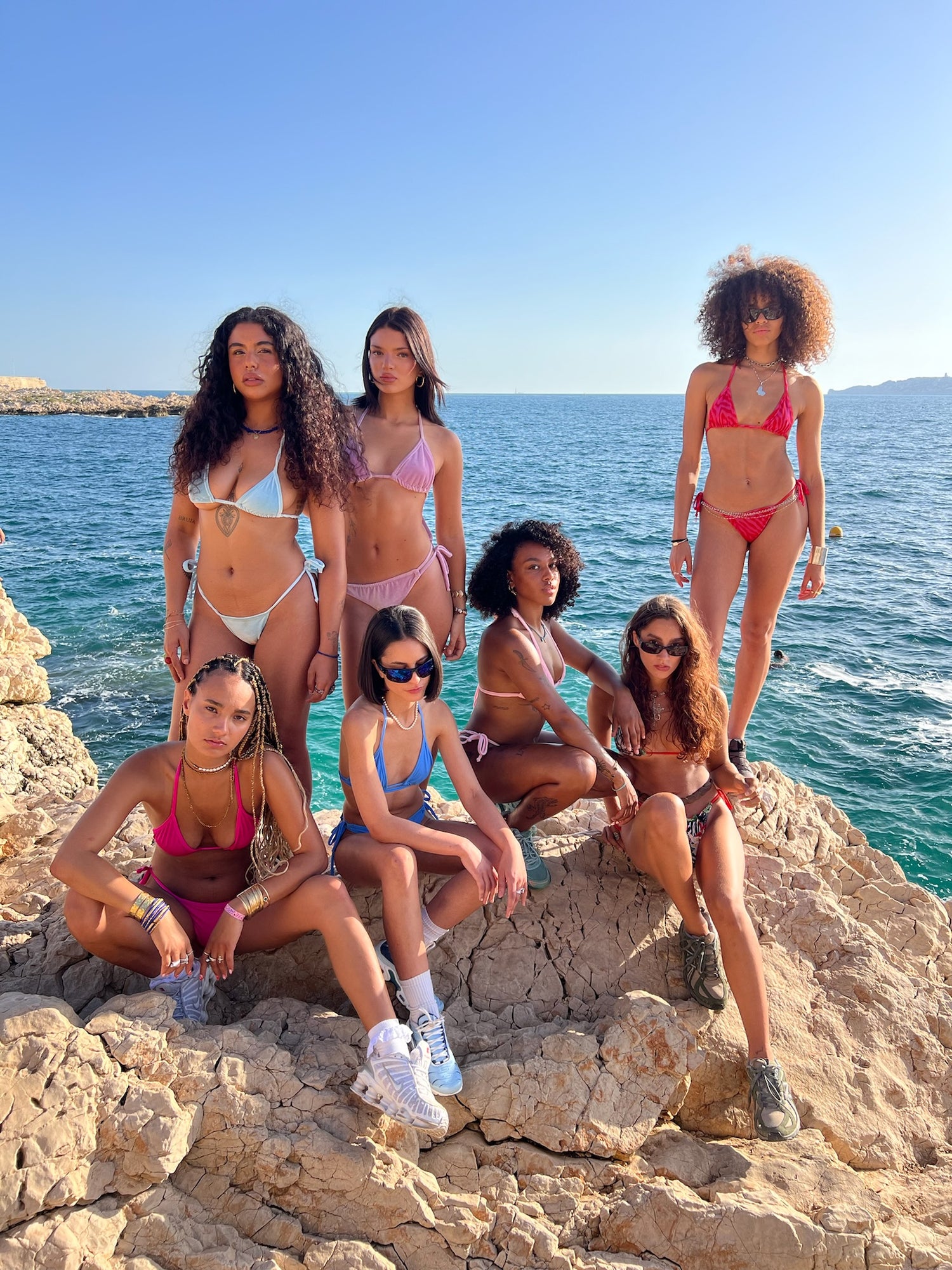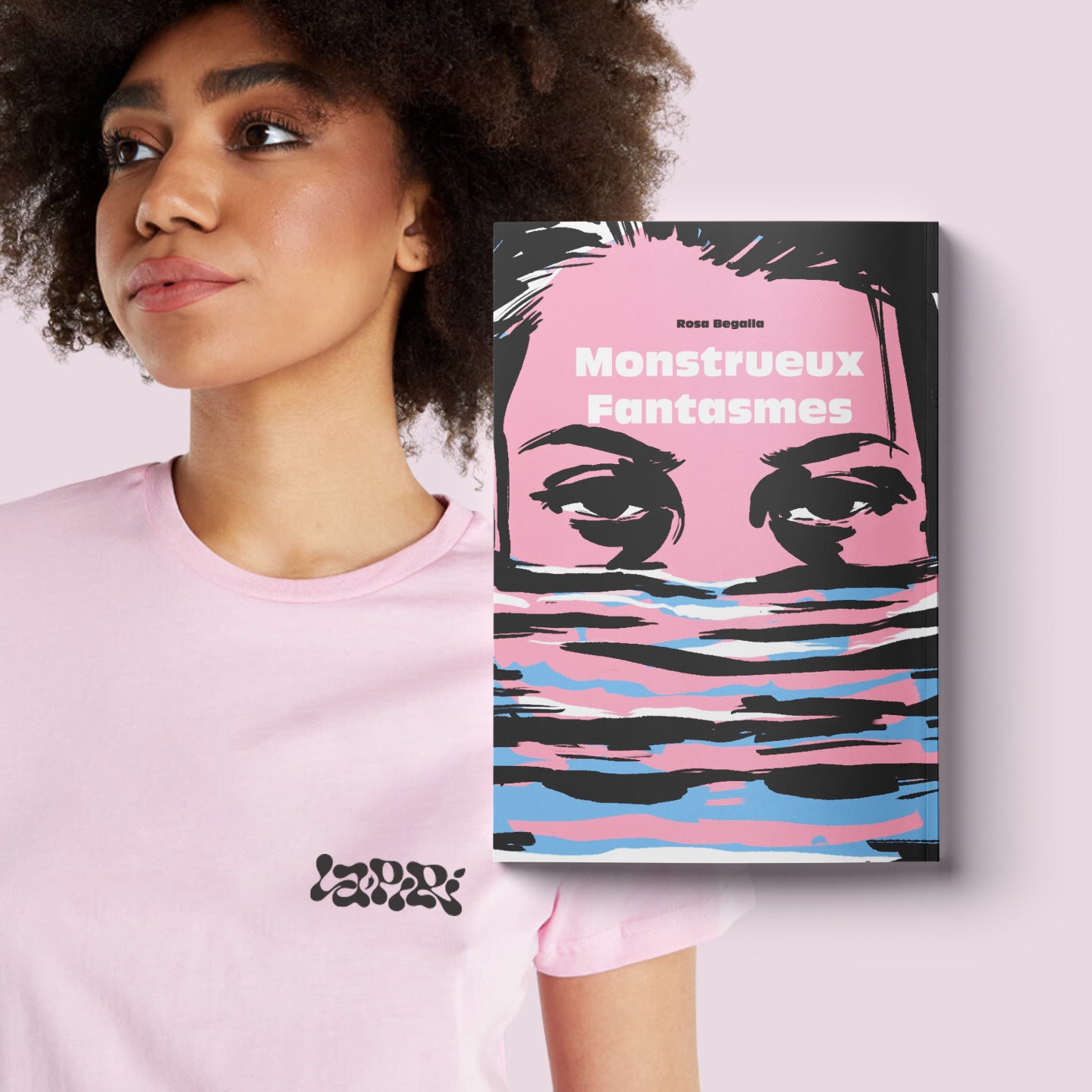1- You want to create your own brand, where to start?
We decide to launch our brand for an idea that is close to our hearts, it often starts from a simple observation, a need. For example, I couldn't find string bikinis in France, so I needed to create these tiny swimsuits. But there is also the idea that you want to develop behind it, your personal touch can make a difference even in a saturated market. For example, if you are setting up a hair salon, there are already plenty of others that are very well-known, this is where your vision or your positioning will make a difference. Maybe you will specialize in starting locks, maybe you only do women's hair, or you only do organic dyes...
Personally, I wanted to democratize the thong in the French landscape as something innocent and not necessarily sexual as I had seen in Brazil, but also to bring back the ease of women with their bodies to Miami and to the United States in general where we can more easily express our personality even at work without being judged incompetent (tattooed lawyers, accountants with pink hair, etc.).
-
Define your brand:
It is therefore necessary to identify what we are offering differently to the world, whether through an innovative idea or a need. Brainstorm the reasons that are driving you to create your brand. Many might think that this is useless, but it helps enormously to know how to present your brand and its strengths to potential investors to convince them to participate but also to simply seduce your future customers.
-
Define your market:
There is this well-known phrase that says “ when you sell to everyone, you sell to no one ” the mass market today is over. The era of the Mad Men of the 70s where we sold for the sake of selling is over. Nowadays, in our globalized and hyperconnected society where everything is at the click of a button, customers are looking for meaning, a cause that touches them, a brand that represents them. Example: People who buy at Zara are not the same people who buy second-hand clothes or at Decathlon… It’s up to you to find your target by correctly defining who you are. So this is not to be neglected.
-
The mistake not to make:
Wanting to do too well. The best is the enemy of the good. Brainstorm a lot, then synthesize, get to the essentials. Don't get lost in gratuitous lucubrations of complex and artistic sentences that risk losing everyone and could give an arrogant image of your brand.
-
Define your financial resources:
And yes, it stings. Honestly, for a small project without merchandise, and you want to do it well at least, you can imagine in the 1000 euros of administrative and marketing costs (INPI, Training, Logos ...), I would say that by selling only a flagship product, an investment of 5000 euros is the minimum to inject (purchase of raw materials, manufacturing, tools, packaging, transport, website ...).
You can try to convince business angels (but this is when the project is already well launched and you want to move to the next level), partners, associates, cooperative financing platforms, state aid or your loved ones to invest in your project. Otherwise, it will be out of your pocket. Even if it doesn't seem cool or useful, don't skimp on your cash flow from the start because it's hard to catch up later, and you want to know if you are profitable when you need to re-inject money or evolve.
2- We roll up our sleeves, and we're off:
-
Find and file the name:
You probably have a name after all that! FIRST thing to do: type your brand name into Google! Make sure it is not already taken especially in your sector, because it would be a shame to do all this work, pay for a logo to discover that someone else already has this name at the INPI and force you to do everything again and therefore fall behind on your estimates. Know that it is possible to have essentially the same name as someone else if they are not in the same sector of activity. For example, a hairdresser and a jeweler will not compete with each other and can therefore both be called “Goldilocks” (check anyway, I do not work at the INPI).
Do the same for the domain names of your website, maybe the hairdresser took “ boucledor.fr ” then you will have to take something else “ boucle-dor.com ” or “ boucledor-bijoux.fr ”. Once your name is chosen and its availability checked on the INPI website, you should buy it! Because even if you create your brand before, if the name is not bought someone can copy you and buy the name and prohibit you from using yours, which would amount to exchanging everything too.
-
The logo:
Who says brand, says logo, a story of transposing all your beautiful brainstorming work into a simple and effective visual concept.As a designer by training and profession, I implore you if you don't know how to make a logo... Don't do it yourself. Yes, it's a profession, like dentistry, it wouldn't occur to you to have a tooth removed "by a friend" like you would have a logo made by that friend who "cracked" Photoshop in 2002.
Already, a logo is made in vector on Illustrator to never be pixelated. The global visual aesthetic will thank you for it. Yes, it can cost between 200 and 1200€ approximately for an individual depending on your needs and the designer's experience, you can also approach design students possibly... but start to learn your trade skills by negotiating prices as you will have to do with your suppliers. Also, tell yourself that this is an investment that you will only have to make once if it is done well!
The life of an entrepreneur being quite difficult and uncertain, put all the chances on your side to start well, your logo is the first thing that people will see!! Same as in the 1st point: get to the point, too often we see super complicated logos that are almost images with “Goldilocks” written in gold, with curly hair coming out of the letters and scissors on the side… STOP, think of Nike, the famous swoosh is so unique, simple and effective that they don't even need to write Nike anymore. That's a good logo.
-
Declare yourself:
There are very good CPF training courses that explain everything very well in 7 days. I can't tell you everything, but know that to start, the best thing if you are alone is to become a self-employed entrepreneur (EI = individual enterprise, you are your company) below 30K euros per year, which will probably be the case at the beginning. Afterwards or if you are partners, it is better to switch to SAS and SARL which separate you from your company and its bank accounts. An accountant can be nice to manage all that if you have the means. Otherwise, get your Dolipranes ready.
3- That’s it, you’re ready, it’s going into production:
Now, I warn you, this is going to be the worst time of your life as an entrepreneur. I have no technique to offer you because… it sucks. I hated this period and I still dread it in the near future.
-
What?
List exactly what you will need (for example, you are making sweaters: are they embroidered? Screen printed? With a woven or paper label? Do you need bags? Gift wrap?)
-
Who?
Define who you want to work with: organic, vegan, eco-responsible, Made in France, European, social project, or wholesale purchase/resale in China is not the best but you don't care about child slaves you like the moula. After that there are surely companies without children in China and sometimes unfortunately the Chinese suppliers are the only ones to produce in small series, on advanced techniques that are no longer done in Europe or extremely expensive like everything that is molds and customization for example). Because no supplier will give you your entire turnkey list, so you will have to juggle with suppliers, textiles, printing, confections, etc. Either you plunder Google far and wide, you will be forced to contact everyone because often their sites are broken to the ground and date from Windows 97 without any update. Either you are lucky, by talking about your project, going to trade fairs you will meet someone who by word of mouth will recommend you to someone else, up to the rare pearl.
Which was my case, after having searched Google from China to Portugal via the USA (not very eco-friendly) to end up in Europe, in Marseille where I wanted to produce Made in France baby. Of course, you can also make it yourself and learn to sew, or do the table service in your restaurant for example.
- How? And there the arm wrestling begins, to have an affordable price for you, according to your needs in quantity. If you start small, you will get smashed and no one will respect you, it's the jungle, that's how it is. Each supplier/workshop has minimum quantities ranging from 1 to 200 pieces... which will always be more expensive than in bulk. But if you have eyes bigger than your stomach by ordering 2000 sweaters directly... Good luck to be sure to sell everything and that it does not remain on your arms. In any case, at the beginning it will be hard but the more they know you the nicer they will be and will help you... if you are still there, the year after... If you are in textiles or cosmetics, find out about the regulations of labels and legal notices.
4- Mood: The Wolf of Wall Street
There you go, it's time to reap the fruits of your labor...and sell. With your domain name purchased before, you can now buy yourself a site on e-commerce platforms (woo, shopify, six, wordpress...etc. It's up to you to find what suits you best). Find out, SEO work will be necessary to move up in Google results. Create your branded social networks, videos for YouTube, posts/reels for Instagram and TikTok, Facebook, etc. Think about shooting your articles in an original way, in line with your brand's style and keeping a consistent image on the networks. Honestly, I think it will be as hard as it is exciting, there will be good days and bad days. But everything we learn is beneficial for the rest of our lives; being an entrepreneur means being a trader, a geek, a photographer, an accountant, an artist, a model, a list as long as the bio of an Instagram influencer and it will therefore never be a waste of time. As Nike would say, “Just do It”!





